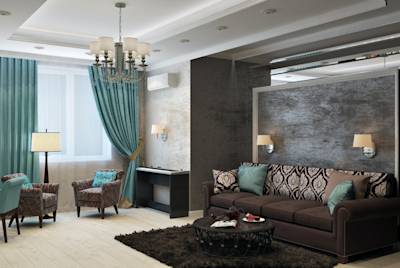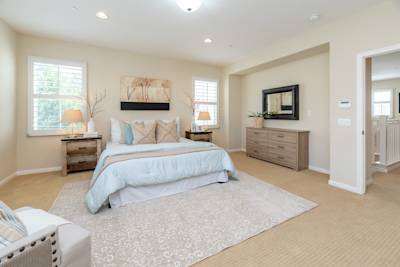
Virtual Staging Tips for Real Estate Agents
The Benefits of Virtual Staging

The Benefits of Virtual Staging

Jacqueline Kyo Thomas
The results are in: When it comes to selling a home quickly and at top price, staging is the undefeated winner. Nothing is quite as persuasive to a buyer as a perfectly staged home. Through staging, you can help a buyer see the possibilities that exist in every room. Staging elevates a blank space and excites a buyer.
Staging is amazing. But staging is also expensive.
While staging has been proven to help you sell a property faster and for more money, it’s also an investment. You have to pay for the staging upfront, which can amount to thousands of dollars each month, and that’s not fun.
But what if there was a way to reap all of the benefits of staging while paying 90 to 95% less?
Actually, there is! It’s called virtual staging, and in this post, we’ll discuss everything you need to know about this somewhat magical real estate technology.
Let’s get started.
Virtual staging is a service that allows you to create photorealistic room interiors of the property that you’re selling.
Through the power of technology, you can transform an empty room into a beautifully designed space that rivals the spaces in Architectural Digest and House Beautiful.
Virtual staging is great for vacant homes, but it can also be used for homes that are currently furnished. A skillful graphic designer can erase furniture and re-work a space to bring out its best features.

Staging, in general, is a useful real estate marketing tool, but virtual staging kicks it up a notch. Here are a few of the reasons you should consider virtual staging:
Buyers love photos, but they don’t love photos of empty spaces. By virtually staging a property, you can stop a buyer in mid-scroll as they’re browsing properties. Not only is a staged property more attractive to potential buyers, it’s also more engaging.
When buyers are confronted with an empty room, they may have no idea what to do with space. Empty rooms are intimidating. Also, when a buyer is viewing a property online, they may not understand the dimensions of a space, especially if there’s a weird camera angle. How large is the room? Can it fit a king sized bed? A sectional? By adding furniture virtually, you can help the buyer understand the dimensions in a space.
Many studies show that staging makes it easier for buyers to imagine living in a space. When polled, 82% of agents said staging makes it easier for buyers to see a property as their home. Also, 41% of agents reported that staging a property makes buyers more willing to tour a property they saw online. Staged homes sell 88% faster than non-staged homes. (They also sell for 20% more).
Virtual staging is a great way to market your property, and it’s affordable, too. When compared with physical staging, virtual staging is between 90% to 95% cheaper. You can expect to pay between $50 to $100 for each virtually staged photo. And, depending on the service, there may be discounts for doing multiple rooms.
As they say, a picture lasts forever.
With traditional staging, you enter into a month to month lease with the staging company. And if you don’t sell in that first month, you’re on the hook to pay another month. That could amount to thousands of dollars in rental costs.
But with virtual staging, you pay once for the service and you can use it forever.
Depending on the company and the scope of your project, you can get virtually staged photos within hours after submission.

When searching for a virtual staging company, keep the following in mind:
Not all virtual stagers offer the same quality product. Always rely on the company’s reviews and portfolio of previous work to see what they're capable of, and if they’re going to deliver the end product that you’re after. Some virtual staging companies offer free consultations or money back guarantees. These differentiating factors can help you decide which company to choose.
When studying a stager’s portfolio, don’t just look for furniture in the space. Also look for layers. Layers are realistic details that add warmth and a lived in vibe to the space. After all, a virtually staged room shouldn’t look virtually staged. It should look realistic.
Examples of layers include art on the walls, rugs on the floor, televisions that are turned on to display a movie or programming, magazines on the coffee table, a bowl of fruit on the dining room table, etc.
It’s easy to confuse the two, but there’s a subtle (but important) difference between decorating and staging. Decorating reveals personality. Staging reveals possibility. You don’t want a room that just looks good. You want the room to tell a story about how a potential owner can live in that space. Staging creates an optimistic mood.
Now that we’ve discussed the benefits and considerations of virtual staging, let’s focus on what you need to know to be successful with virtual staging.
It’s super important to start with a high quality, high resolution photo of the space you want staged. This gives your stager the best material to build upon. Don’t submit a blurry photo because it will create a less-than-professional outcome.
When taking photos, whether that’s you, the homeowner, or a professional, be sure that you consider the best angle to capture the photo. Ideally, you want to take the photo from an angle that makes the room feel spacious and the ceilings tall.
Fisheye lenses distort images and create a weird impression of space. It’s best to use a standard lens when photographing a room, but you can also choose wide angle lenses for smaller spaces, like bathrooms and closets.
If you have the inclination and budget, consider showing different room setups for each main room. This is optional, of course, but it may help you engage buyers who have different interior design preferences.
For example, you may virtually stage a room three ways: in modern, bohemian, and transitional styles. Then, on your website, offer a visitor the option to see a customized version of the property styled in their preferred aesthetic. You can even ask for their email address so that you can send them the customized stagings. (This can build your email list, too!)
It’s a fun way to generate new leads while showing your property at the same time.
You only need to stage the most important spaces in a home. This can help the buyer understand the dimensions and space in your home. You don’t need to stage rooms that don’t have a lot of furniture (such as kitchens or bathrooms).
While you can have multiple styles for each room, there’s no need to have multiple views of each room. That is, unless you want to highlight special features in a room which can’t be captured with just one shot.
Clean the space before taking photos. Sure, a stager can “clean” the room virtually, but that’s not a good idea. It can disappoint the buyer and cause them to distrust you, especially if the space is dirty when a buyer actually tours the space.
Also, don’t alter the basic structure of your room. Don’t change the floor (other than adding a rug when appropriate). Don’t “paint” the walls or cabinets. Don’t create different exterior views from the windows.
This is considered false advertising. People don’t expect furniture to stay in a space, so staging itself is harmless. But when you add or take away parts of the home that can’t or hasn’t been moved in real life, you get into hot water.
It may seem obvious to you that the property is staged, but it may not be obvious to others. Always disclose that the images have been virtually altered to show the possibilities of a space.
As with any form of real estate marketing, be careful that your virtually staged images are complying with the Fair Housing Law. Don’t exclude anyone in a protected class as outlined here. Also, when describing a virtual photo of the property, don't use words that discriminate against a person based on race, color, nation of origin, religion, sex, disability, or familial status.
Virtual staging is a great, affordable, and hygienic way to showcase your client’s property. Use this real estate marketing tool to attract home buyers.